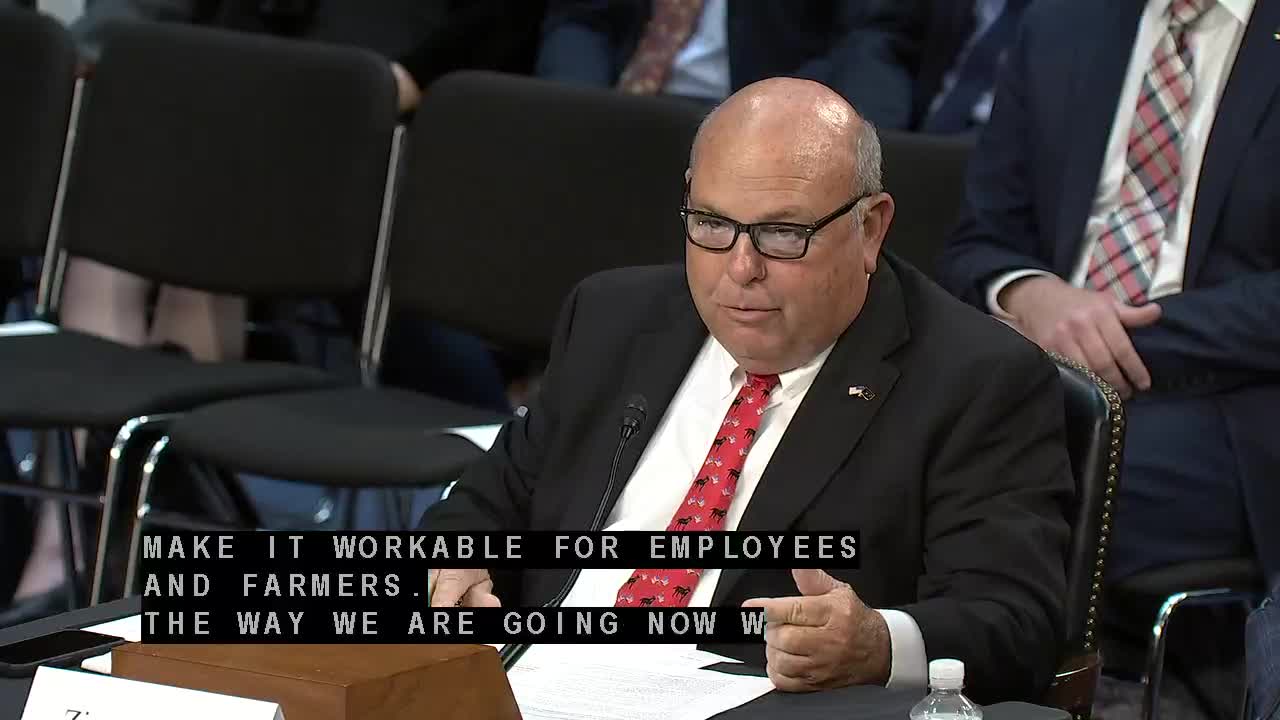Senators address wage rates and tariffs impacting US agriculture and labor supply
June 04, 2025 | Aging (Special), Special, Select and Other Committees - House & Senate, Congressional Hearings Compilation
This article was created by AI summarizing key points discussed. AI makes mistakes, so for full details and context, please refer to the video of the full meeting. Please report any errors so we can fix them. Report an error »

The government meeting held on June 4, 2025, focused on the pressing issue of America's aging farm workforce and the challenges facing family farms. The discussions highlighted the urgent need for a reliable labor force in agriculture, particularly as many farmers struggle to meet wage demands while remaining competitive.
The meeting began with a call for the creation of a comprehensive H-2A program that addresses the labor shortages affecting all sectors of agriculture. Participants emphasized the necessity for year-round workers, particularly in industries like dairy, where work is continuous. The burdensome regulations associated with labor programs were also a significant concern, as they impose financial strains on farmers, making it difficult for them to comply while maintaining profitability.
A key point raised was the outdated formula used to determine the Adverse Effect Wage Rate (AEWR), which has not been revised in over 60 years. This formula, originally designed to count employees, is now seen as unworkable and in need of reform to establish a fair wage rate that encourages hiring and supports the sustainability of family farms.
Senator Jill Brown addressed the impact of recent tariffs on agricultural operations, particularly in New York's dairy sector, which relies heavily on Canadian imports for feed and fertilizer. The imposition of tariffs has led to increased operational costs and could jeopardize long-standing trade relationships. Experts warned that continued tariffs could result in higher input prices and restricted access to export markets, further complicating the financial landscape for U.S. farmers.
The discussion also touched on the broader implications of trade relationships, with a consensus that maintaining strong ties with trading partners like Canada and Mexico is crucial for the U.S. dairy industry and other agricultural sectors. The uncertainty surrounding tariffs and trade policies has led to hesitancy in investment, which could stifle growth and innovation in agriculture.
In conclusion, the meeting underscored the critical challenges facing America's family farms, particularly the need for a stable labor force and favorable trade conditions. The discussions highlighted the urgency for policy reforms that can support farmers in navigating these complex issues, ensuring the viability of family farms for future generations.
The meeting began with a call for the creation of a comprehensive H-2A program that addresses the labor shortages affecting all sectors of agriculture. Participants emphasized the necessity for year-round workers, particularly in industries like dairy, where work is continuous. The burdensome regulations associated with labor programs were also a significant concern, as they impose financial strains on farmers, making it difficult for them to comply while maintaining profitability.
A key point raised was the outdated formula used to determine the Adverse Effect Wage Rate (AEWR), which has not been revised in over 60 years. This formula, originally designed to count employees, is now seen as unworkable and in need of reform to establish a fair wage rate that encourages hiring and supports the sustainability of family farms.
Senator Jill Brown addressed the impact of recent tariffs on agricultural operations, particularly in New York's dairy sector, which relies heavily on Canadian imports for feed and fertilizer. The imposition of tariffs has led to increased operational costs and could jeopardize long-standing trade relationships. Experts warned that continued tariffs could result in higher input prices and restricted access to export markets, further complicating the financial landscape for U.S. farmers.
The discussion also touched on the broader implications of trade relationships, with a consensus that maintaining strong ties with trading partners like Canada and Mexico is crucial for the U.S. dairy industry and other agricultural sectors. The uncertainty surrounding tariffs and trade policies has led to hesitancy in investment, which could stifle growth and innovation in agriculture.
In conclusion, the meeting underscored the critical challenges facing America's family farms, particularly the need for a stable labor force and favorable trade conditions. The discussions highlighted the urgency for policy reforms that can support farmers in navigating these complex issues, ensuring the viability of family farms for future generations.
View full meeting
This article is based on a recent meeting—watch the full video and explore the complete transcript for deeper insights into the discussion.
View full meeting